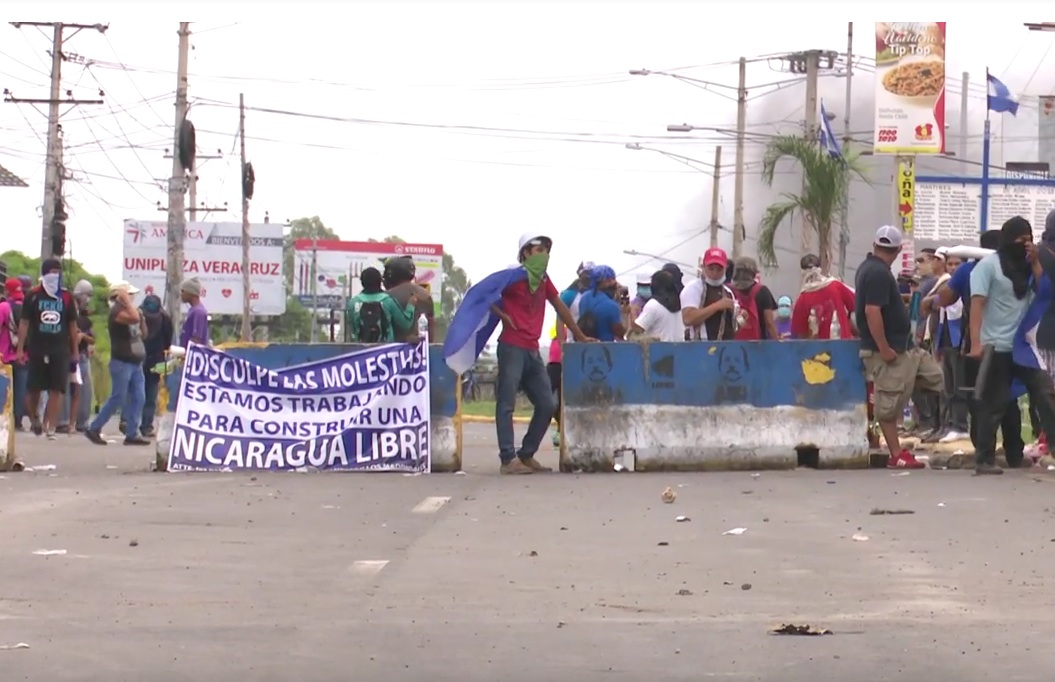Ángel Gahona was live-streaming a protest against President Daniel Ortega when he was shot dead. His family believe the aim was to silence him
Carl David Goette-Luciak in Bluefields
Two weeks before broadcasting his own death on Facebook, Ángel Gahona admitted fearing his days were numbered.
“If I turn up dead one day, don’t be surprised,” his father recalled him saying as the pair stared out at Bluefields Bay one blustery afternoon.
It was not the first time Gahona – a crusading Nicaraguan journalist known for his investigative reports on police abuse and drug trafficking – had made such remarks. “I can’t remember how many times he told me they were going to kill him,” said his father, also called Ángel.
But on 21 April – day four of a continuing popular revolt against Nicaragua’s President Daniel Ortega – the journalist’s grim prediction finally came true.
As Gahona used his smartphone to stream the aftermath of clashes between police and protesters just down the street from his home in the Caribbean coastal city of Bluefields, a shot rang out and his body slammed on to the concrete.
“I’m thinking he fell, or he’s joking,” recalled Neyda Dixon, a fellow journalist who was also covering the protest. “[But] when I see him bleeding out, I start to scream.”
Gahona, a 42-year-old father of two who ran the local news website El Meridiano, is one of scores of people to have been killed since protests began to sweep Central America’s largest country on 18 April.
At first, the upheaval was fueled by opposition to unpopular pension reforms that Ortega’s government had proposed. But when pro-government forces violently cracked down on demonstrators – in many cases with live ammunition – the focus of the uprising shifted to the septuagenarian Sandinista himself, who now faces the greatest political crisis of his 11-year rule.
Since the one-time revolutionary returned to power in 2007, social programs, such as his “Zero Hunger” initiative, have benefited many. But protesters also accuse Ortega of turning Nicaragua into an authoritarian one-party state, run in cahoots with his widely loathed first lady and vice-president, Rosario Murillo.
A month after the unrest began, violence returned on Monday when riot police confronted protesters and students demanding Ortega’s resignation seized a university in Managua, the capital.
Government supporters quickly gathered to end the takeover, but anti-government protesters rallied to support the students.
“We’re not here to hold a dialogue. We’re here to negotiate your departure,” the student leader Lester Alemán told his president at the start of talks last week to defuse the escalating crisis.
If the students want to see the back of Ortega, the priority for Gahona’s family is finding out who killed him – and why.
On 8 May, 17 days after his death, two young men were detained on suspicion of shooting the journalist with a homemade gun. They were paraded before the media by masked police officers and transferred to El Chipote, a notorious Managua jail.
But Gahona’s family and friends are unconvinced by that narrative and instead point the finger at police, who they suspect took advantage of the chaos on the streets to dispose of a journalist they considered an irritant.
“We believe the police killed Ángel to send us a message. To tell all the journalists here to shut up, to stop supporting or covering the protests,” said Hayzel Zamora, 27, a fellow journalist who witnessed Gahona’s death.
Attempts to contact police in Bluefields were unsuccessful. Managua police officials said they had no information to share on the case and nothing to say.
Gahona’s mother, Amanda, said her son’s childhood in 1970s Nicaragua – during the brutal dictatorship of Anastasio Somoza – had instilled in him a deep-rooted fear of the police.
But after becoming a professional journalist, he never shied away from covering their activities. He became known in Bluefields for covering thorny stories such as police corruption and drug trafficking that other journalists preferred to ignore.
“He wasn’t afraid of anything,” said Suyen Sánchez, a journalist and friend.
Colleagues say it was that fearlessness that took Gahona out on to the streets on the afternoon of 21 April as anti-Ortega protests swept Bluefields.
Sánchez, who works for a local station called Radio Unica, remembers arriving on the scene at dusk to find a group of protesters setting fire to a billboard featuring the image of Ortega and his wife.
Gahona, always first on the scene, was already there.
According to Sánchez, the shooting started shortly after, as police opened fire on demonstrators, hitting an 18-year-old – one of the same men later detained for Gahona’s killing.
“I ran upstairs to tell his brother,” remembered the journalist’s wife, Migueliuth, who had been following his livestream from their home, just a few blocks away. “I only thought that he had been hurt.”
In 1978, Pedro Joaquín Chamorro, an outspoken critic of the Somoza dictatorship, was assassinated. His murder stirred public outrage and the following year a popular revolution, which Ortega helped lead, toppled the regime.
When Ortega kicked off the peace talks in Managua last week, he was interrupted just seconds into his speech, by cries of: “Justice for Ángel Gahona!”
One month after his death, however, relatives say there is little, if any, sign of justice.
Determined that Gahona’s name will not be forgotten, his mother has joined protests in Managua, marching alongside dozens of other mothers carrying photos of their slain children.
“We as a family don’t hate anyone,” she insisted. “We forgive Ángel’s killers. But we want the truth, I don’t care if they only spend a day in jail.”
Gahona’s case may still be unsolved, but if his shooting was an attempt to snuff out dissent, his father is convinced that it has failed.
“They wanted to silence Ángel’s voice,” he said. “But they only made it spread.” (the Guardian).



